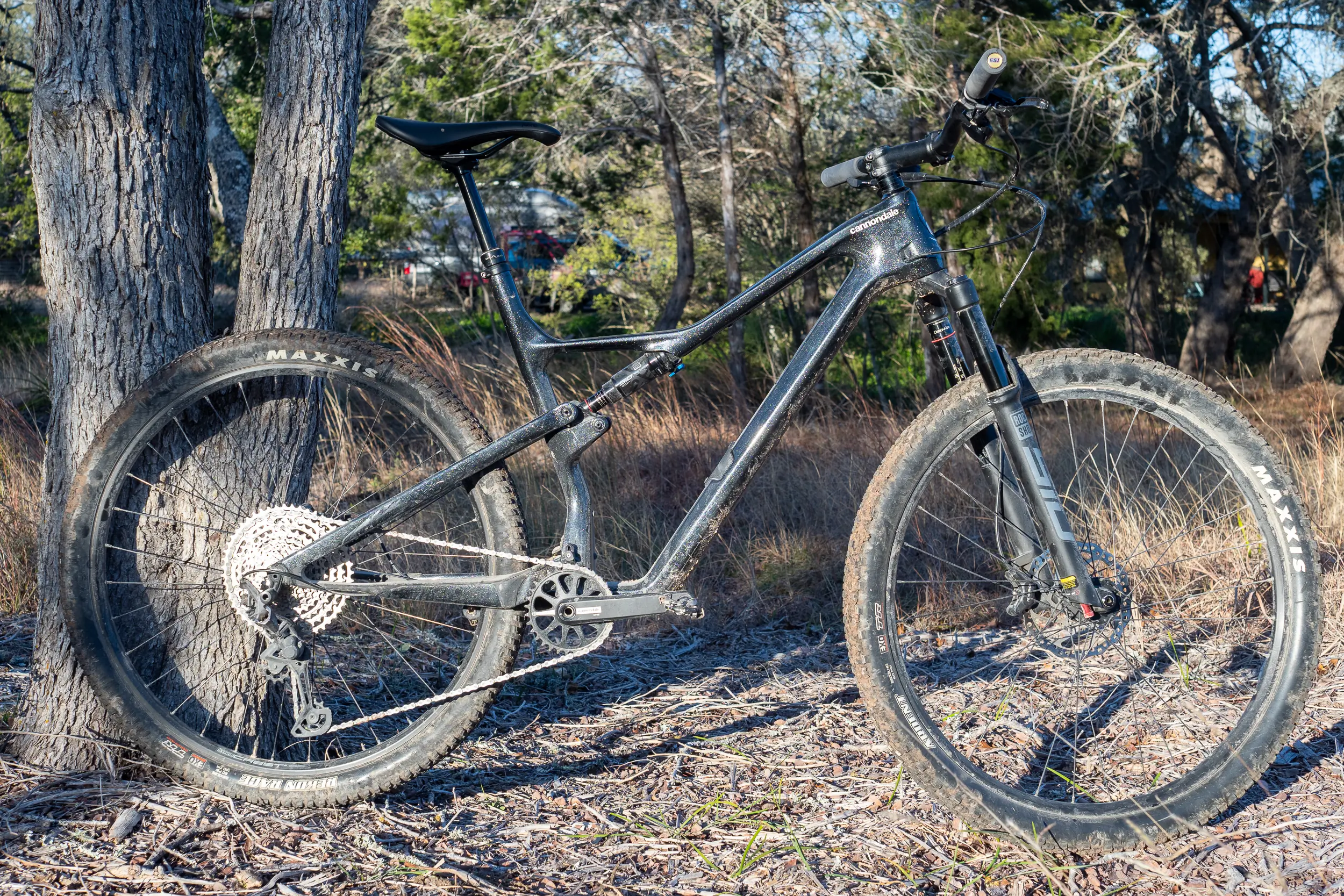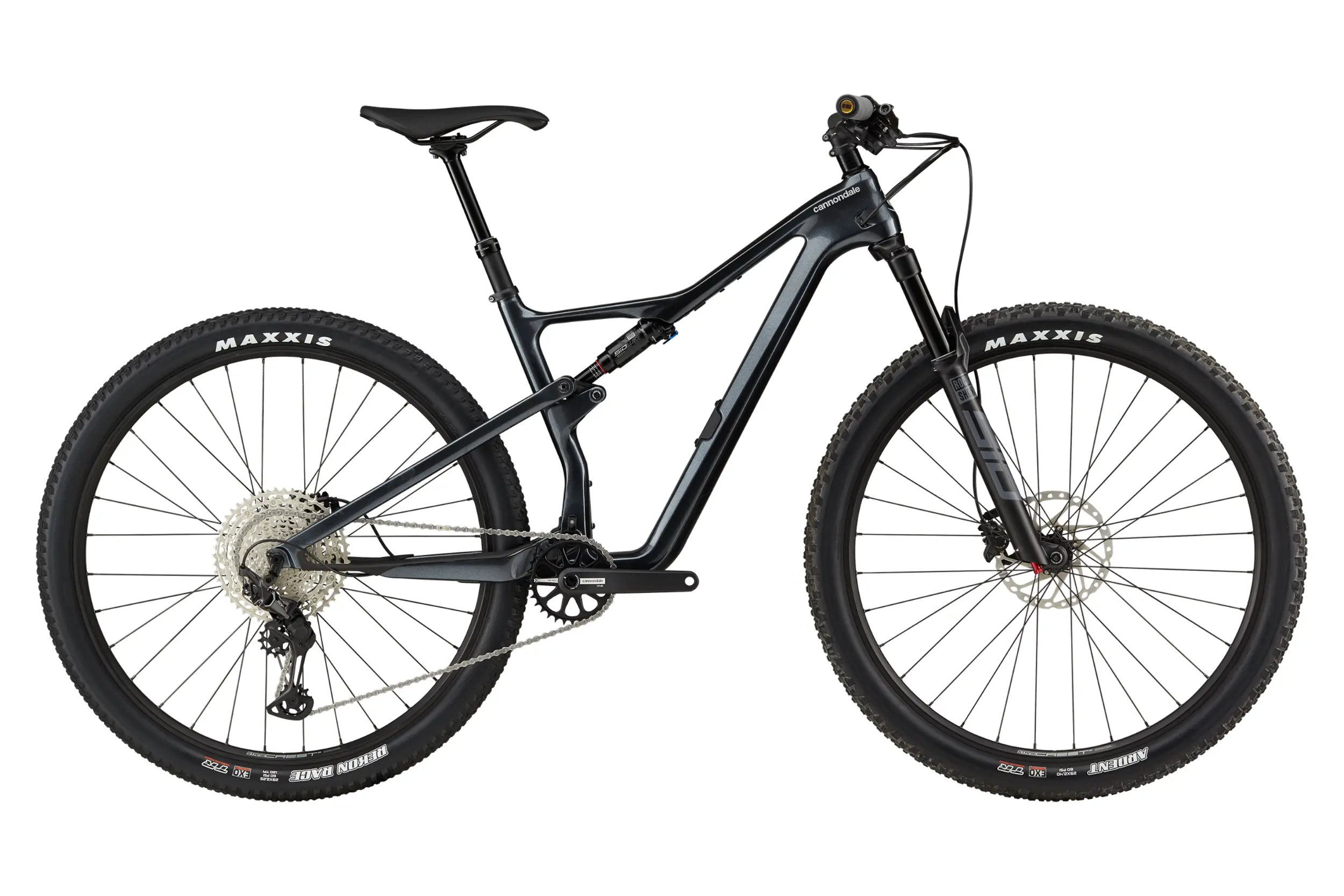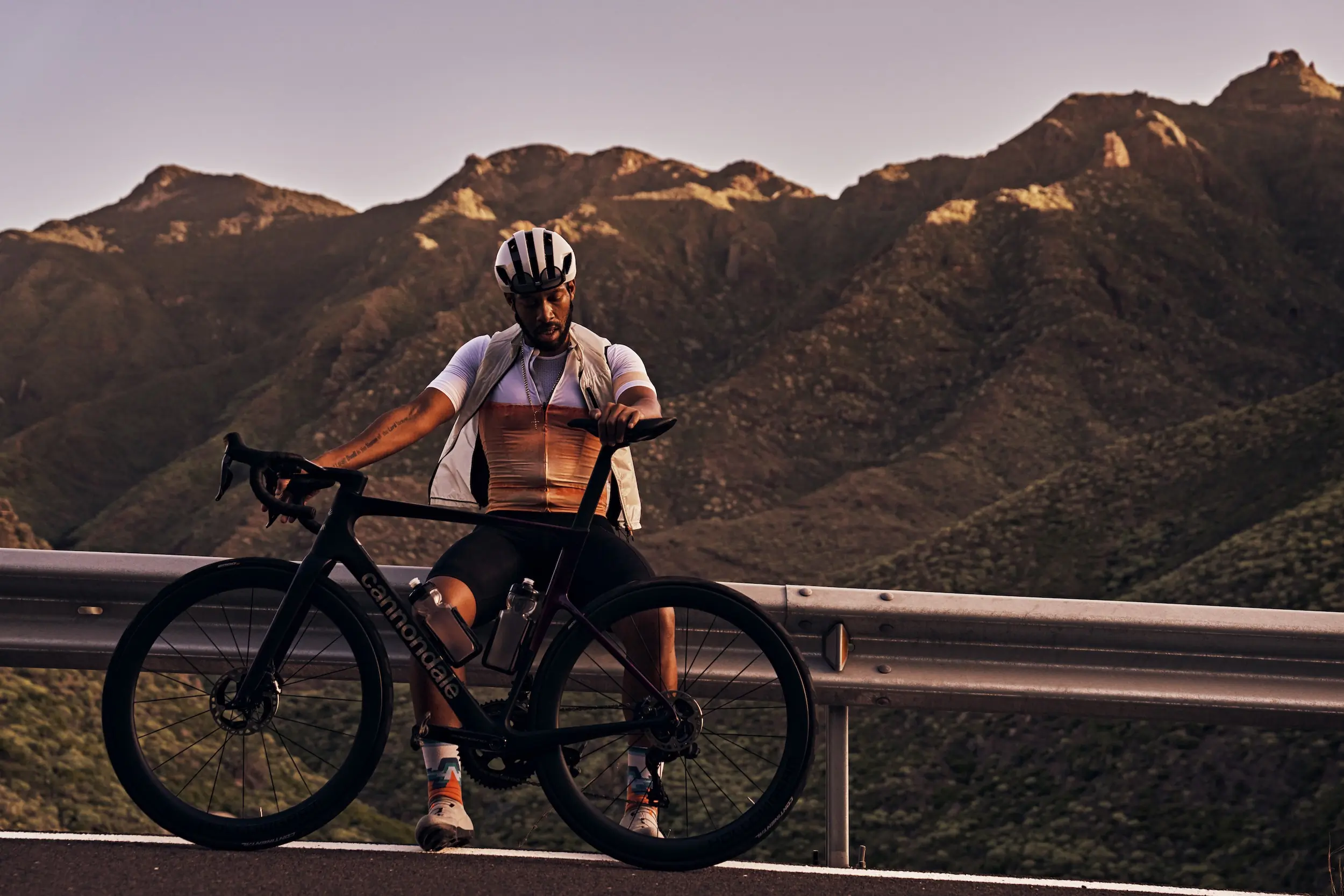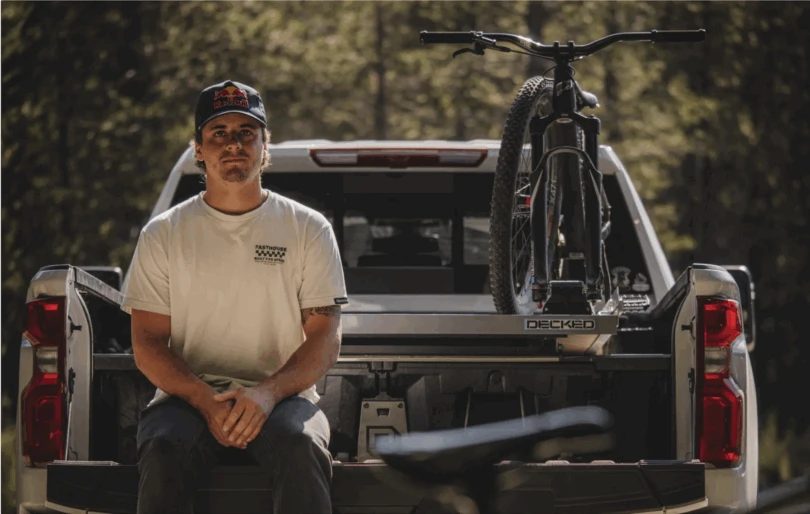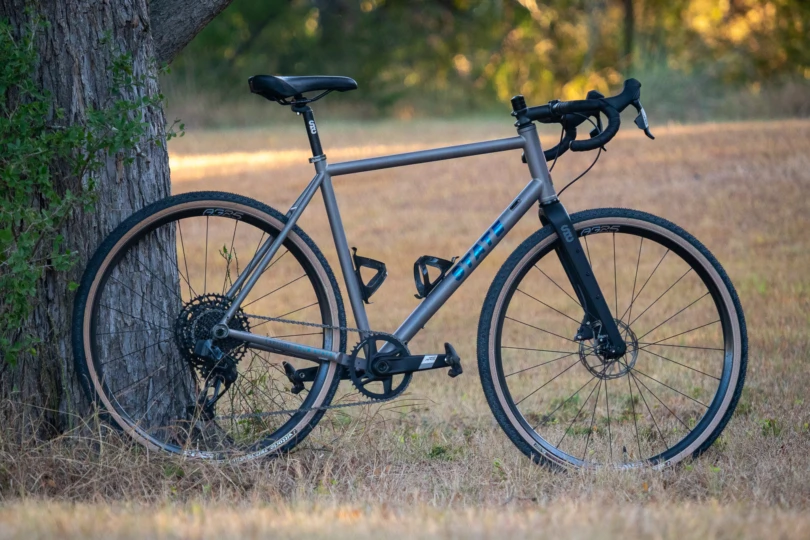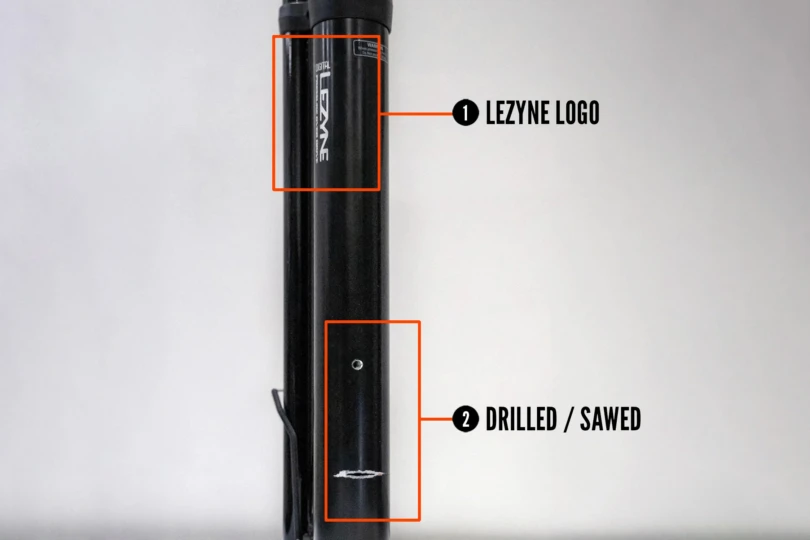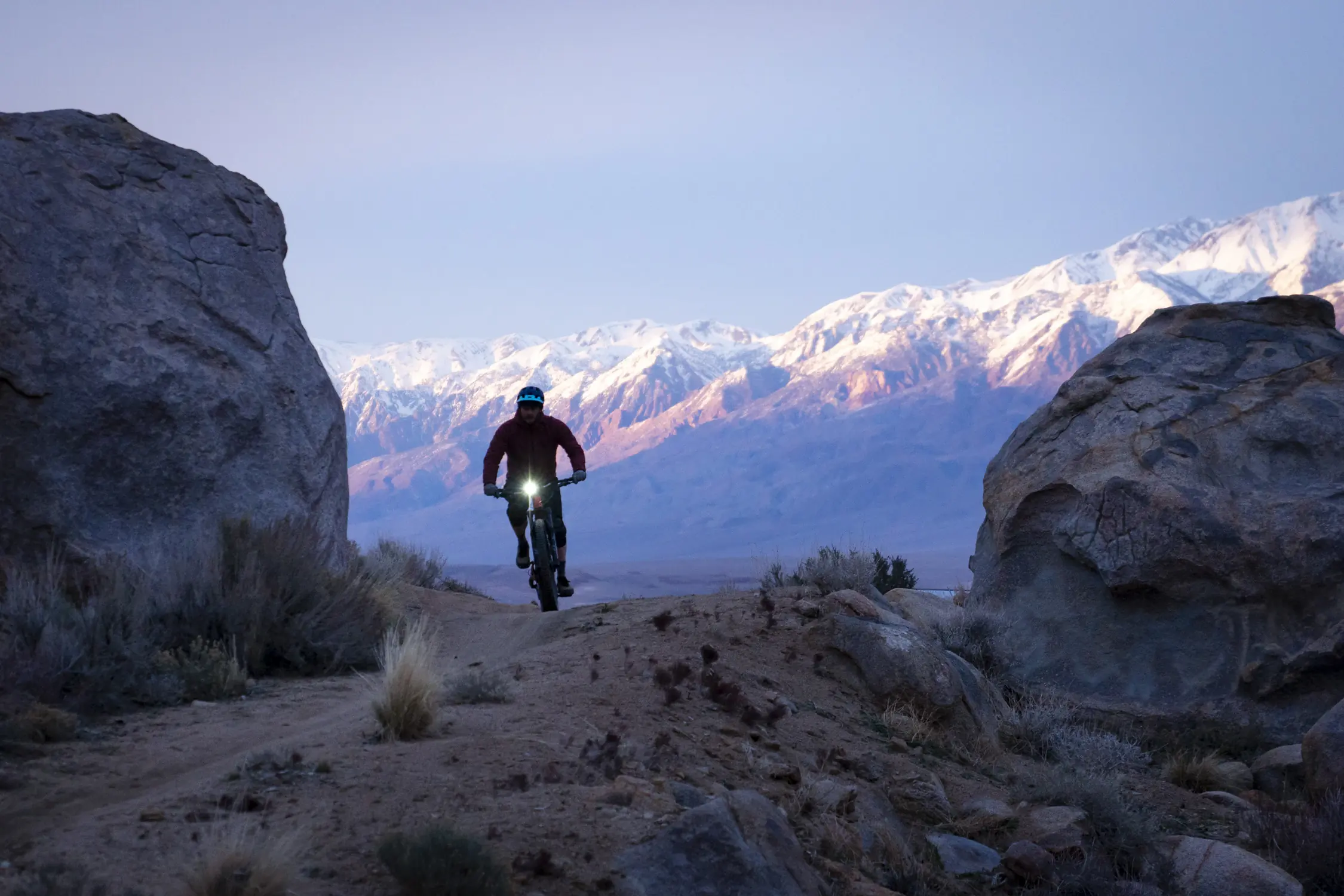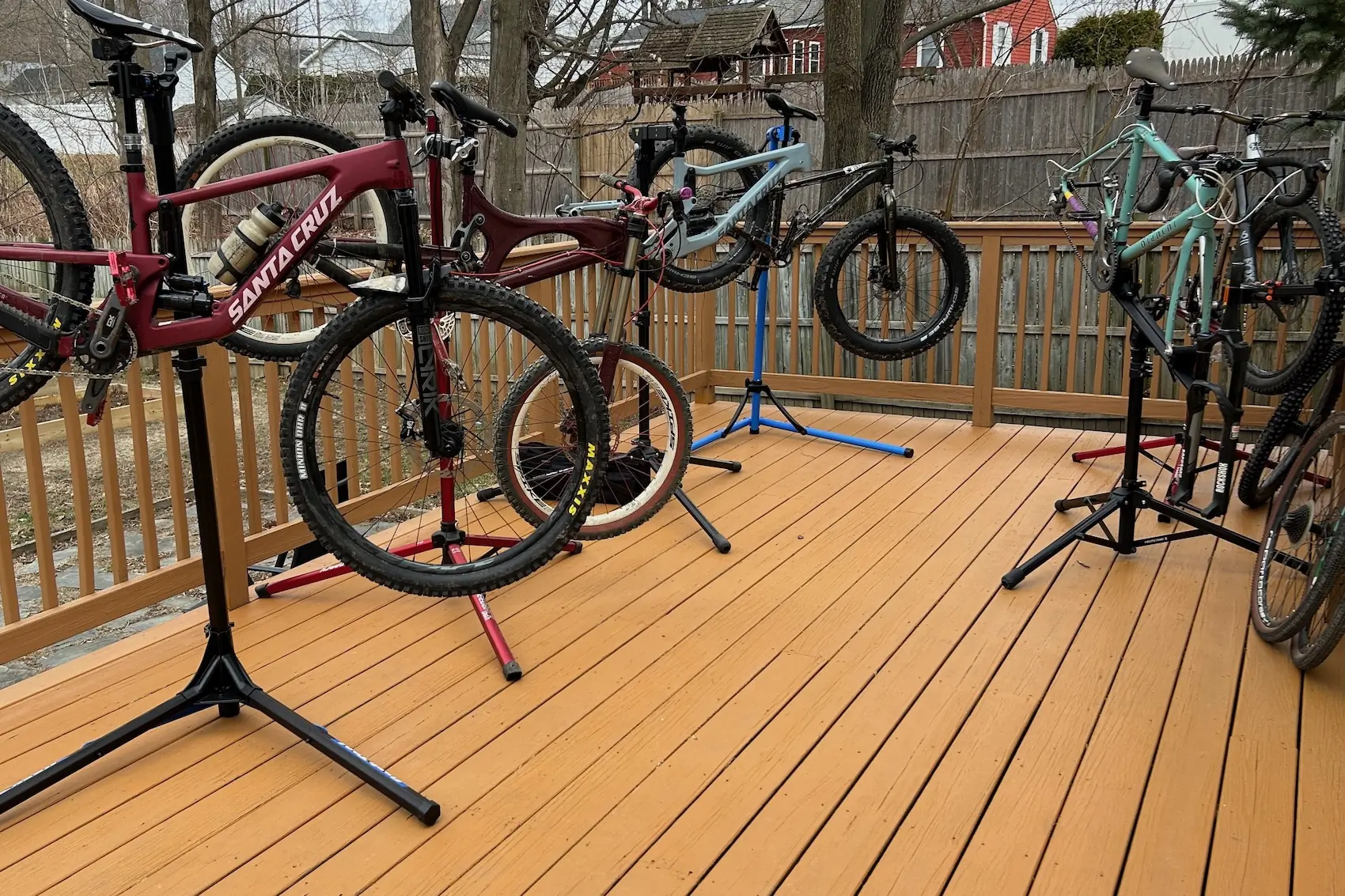I was excited to test the Cannondale Scalpel SE2, as the original Scalpel was one of my favorite cross-country racers back in the day. I was skeptical of simply adding a longer travel fork and shock to such a proven racing chassis, but I told myself to keep an open mind.
And I’m glad I did. Over 9 months of testing on the rocky terrain around Austin, Texas, I’ve grown fond of the longer-legged Scalpel. It tackled terrain too gnarly for a pure cross-country bike, but it wasn’t a true trail-smashing rig. It straddled two mountain bike categories, rewarding active and deliberate riding with excellent speed over various terrain.
In short: The Cannondale Scalpel SE2 delivered the nimble handling, efficient power delivery, and speed that the Scalpel name suggests. But it did so over terrain that would cause an XC bike to fumble. It felt much faster than a true trail bike but required more attention, which equated to more fun. It’s a perfect solution for mountain bikers who ride both cross-country and gnarlier trails but want one rig that can do both well.
- Frame material: Carbon
- Fork: RockShox SID Select, 120mm, Debonair
- Rear shock: RockShox SIDLuxe Select+
- Wheels: Stan's NoTubes Crest D aluminum rims, DT Swiss 14g spokes, Shimano MT400/410 hubs
- Drivetrain: Cannondale 1 crank, Shimano Deore XT rear derailleur, Deore chain and cogs
- Brakes: Spec is Shimano MT501 with 180/160mm RT64 rotors; sample was Tektro Gemini SL
- Bottom bracket: Cannondale PF30 MTB
- Handlebar: Cannondale 3 Riser, 6061 aluminum alloy
- Stem: Cannondale 3, 6061 aluminum alloy
- Seat post: Cannondale DownLow dropper
- Saddle: Spec is Cannondale Scoop Shallow; sample was a fabric saddle
- Tires: Maxxis Ardent Race Front, Maxxis Rekon Race rear
Pros
- Lively and efficient rear suspension
- Light frame weight
- Excellent cornering at higher speeds
- Superb frame finish
- Quietest MTB tested to date
Cons
- Out-of-spec components on sample due to supply chain issues
- Press Fit bottom bracket could be a maintenance and replacement issue
Cannondale Scalpel SE2 Review
The Cannondale Scalpel SE2 Chassis
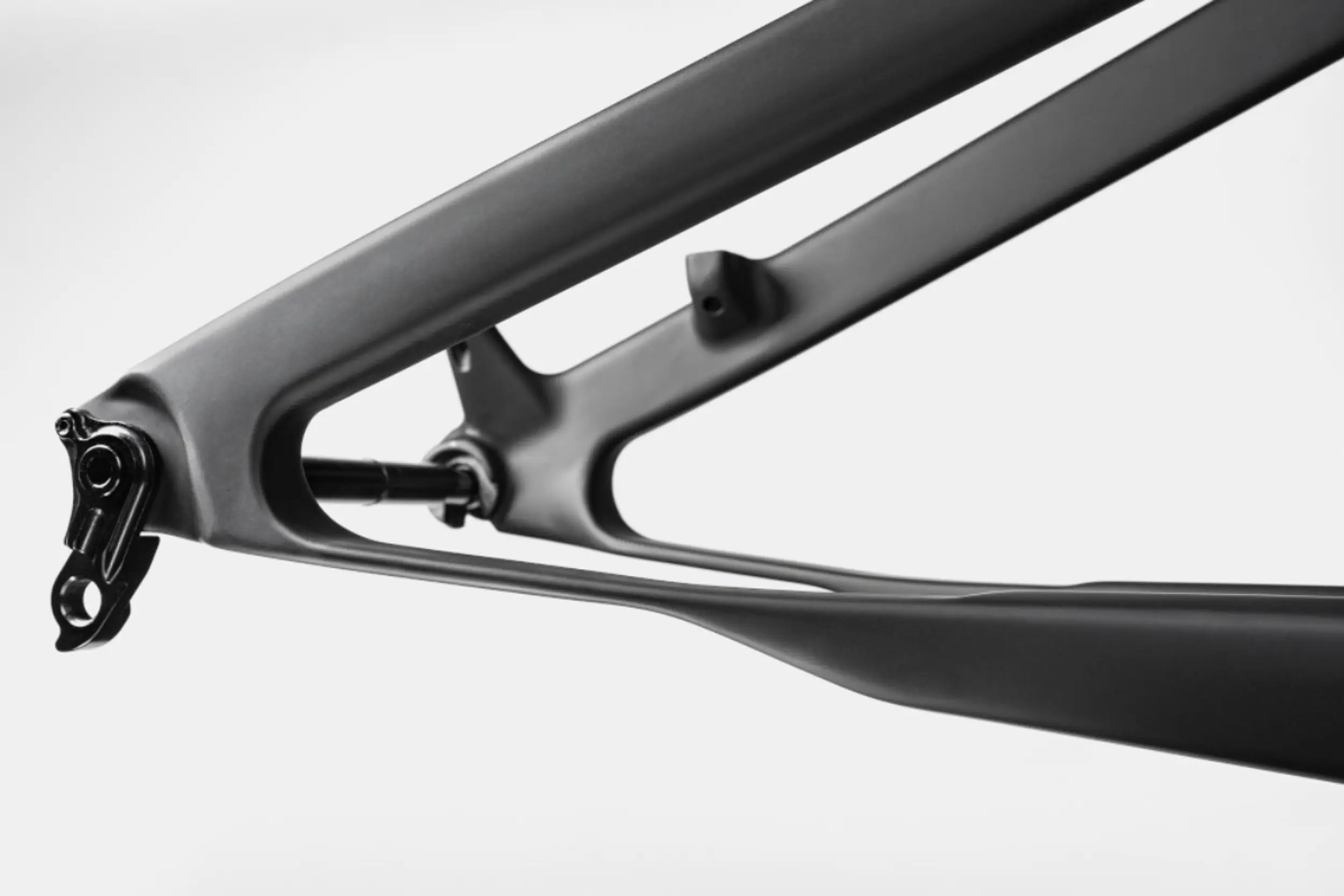
The Cannondale Scalpel chassis has always been one of the lightest, and the Scalpel SE2 is no exception. Cannondale claims a respectable 2,160 g (1,910 g for the premium Hi-MOD frame!) for a medium Scalpel Carbon frame complete with rear shock, thru-axle, derailleur hanger, paint protection, and cable ports. My midlevel SE2 large bike weighs a verified 29.4 pounds with Shimano XTR pedals.
Cannondale graces the Scalpel frame with a patented Flex-Pivot, visible as an impossibly thin-looking section of the chainstays just forward of the rear dropouts. I feared breaking it on our local rocky, ledgy, and unforgiving trails when I first saw it.
But this section of the frame is solid compressed carbon fiber that Cannondale tried to cycle to failure in a specially built test rig. The engineers eventually had to quit, frame unbroken, to move on to other projects. The Flex-Pivot is also very wide to prevent unwanted lateral movement.
Like other brands, Cannondale applied “progressive geometry” to its latest iteration of the Scalpel, slacking the head tube angle by 1.5 degrees and steepening the seat tube angle by a degree. The reach has elongated 10-15 mm depending on frame size, and the bottom bracket dropped 3 mm.
Chainstays remain roughly the same at 436 mm, in mountain bikes’ somewhat “standard” range. Combined with a shorter reach stem and a 44mm fork offset, this new geometry is a step toward the holy grail of snappy, quick handling that is still stable when the going gets rough.
Cannondale put two water bottle cages within the Scalpel Carbon’s main triangle, which is rare. It also delivers the Scalpel SE2 with its “Stash” kit. A quick-draw holster resides under the down tube water bottle cage, which houses a Fabric 8-in-1 multitool and Dynaplug kit. It also secures a CO2 inflator or mini-pump.
The test bike wore Cannondale’s “Black Magic” paint scheme. It was breathtaking to all who got a close look while it was in the sun. Shiny flecks deep in the paint were unanimous jaw-droppers. Factory-mounted paint protection tape, molded-in chainstays, and seat stay guards were appreciated additions.
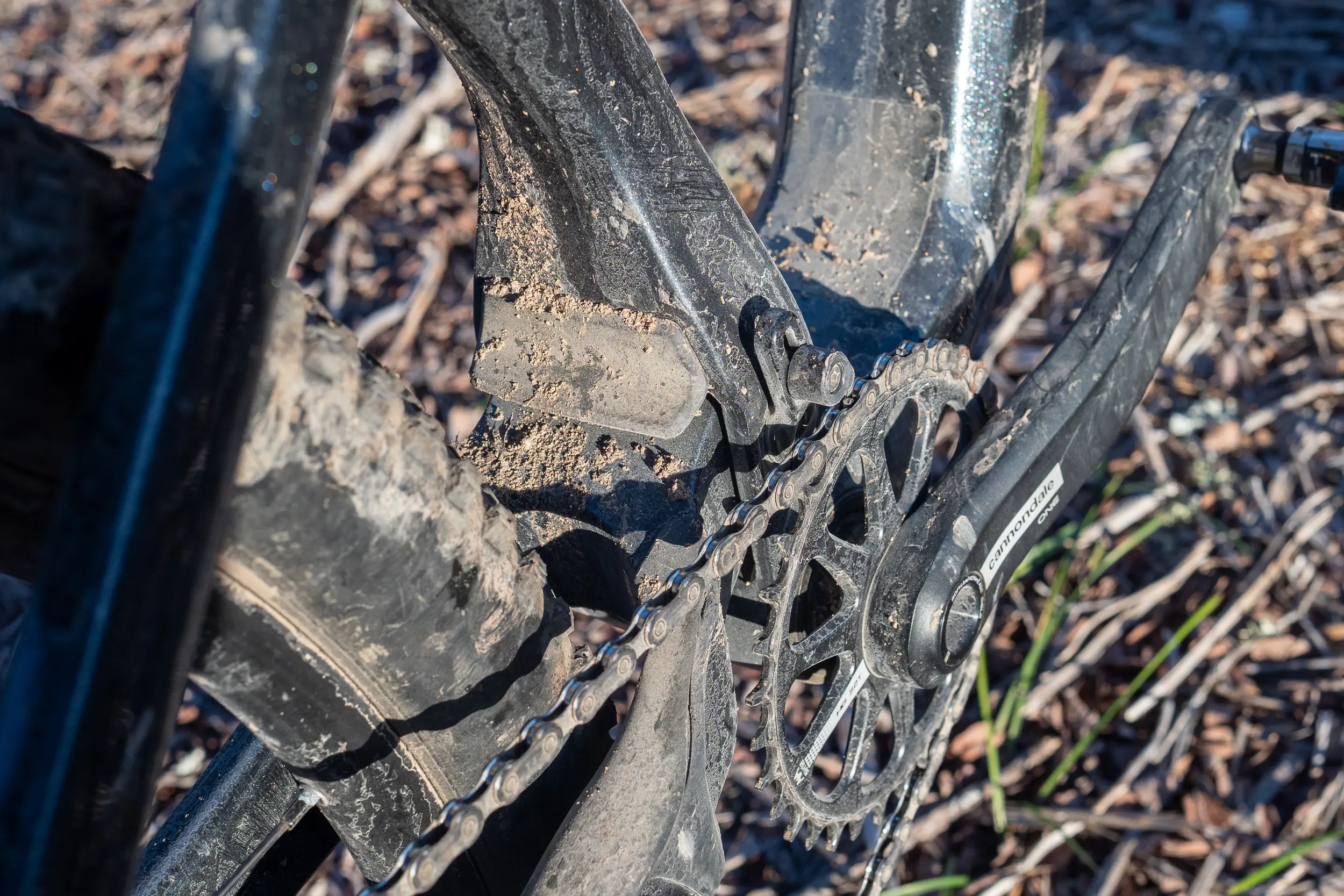
One negative in my book is Cannondale’s insistence on sticking with a PF30 press-fit bottom bracket on this bike. Although I never had an issue over the long test period, I feel better about having a threaded bottom bracket to ease maintenance. A threaded unit would greatly enhance the options for replacements and ease of removal and installation.
The PF30’s wide dimensions did allow Cannondale to house the swingarm pivot juncture on the inside of the bottom bracket shell area, which is unique and may offer some advantages. The massive-looking bottom bracket area, with the wide crank spindle, most likely added lateral and rotational stiffness to this critical area.
The Cannondale Scalpel SE2 on the Trails
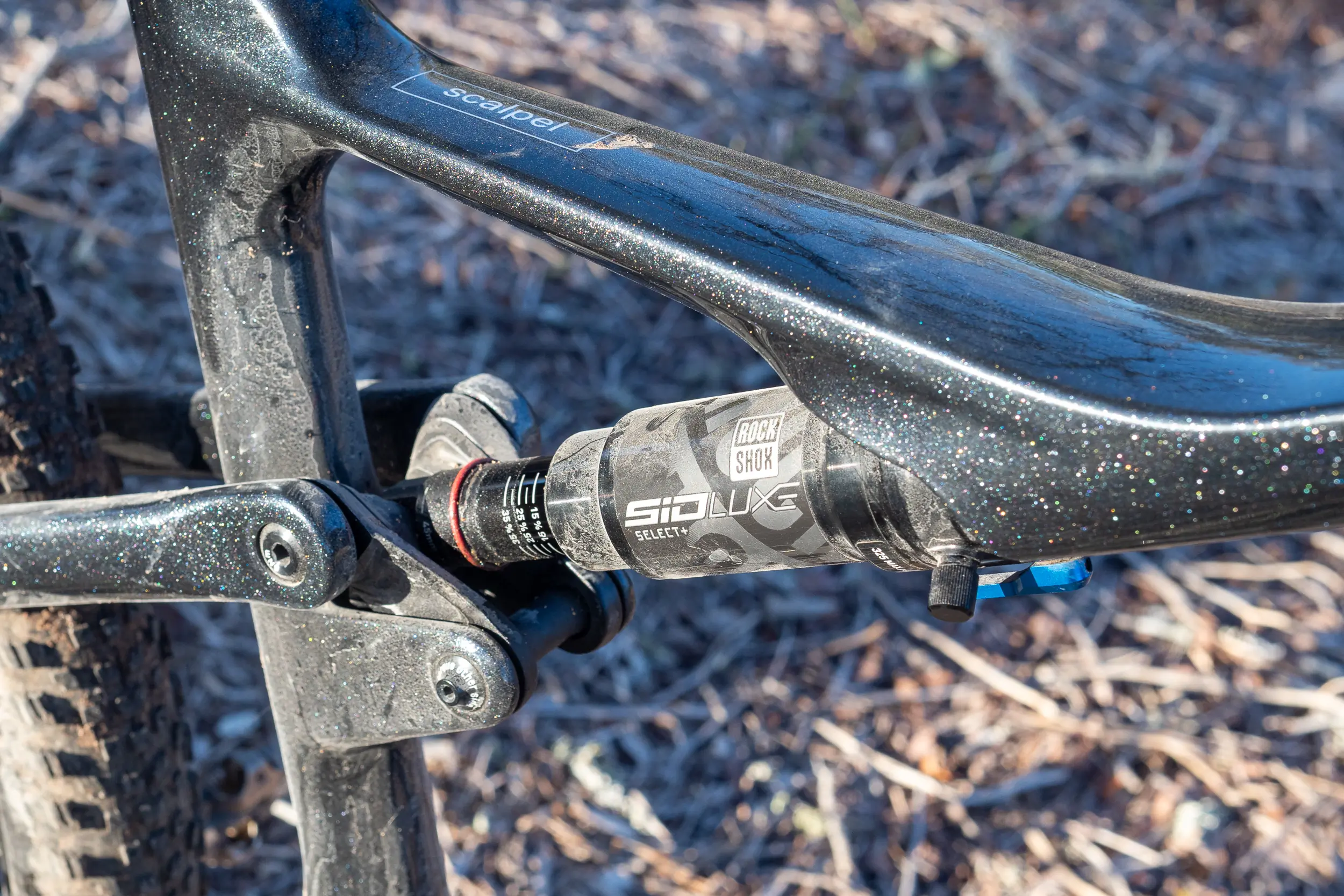



Power Delivery
Straight away, the feeling of direct power delivery to the rear wheel was evident, even with the shock wide open. This made the Scalpel SE2 an excellent climber. The lack of energy-robbing bob and chain tension-induced shock compression reminded me of pure XC race bikes. When the rear wheel encountered an obstacle while under power, the suspension absorbed it well and quickly got the rear wheel back on the ground to drive me upward.
The slight forward weight bias also helped me keep the front down on my area’s super-steep power climbs. I didn’t have to exaggerate forward lean with my upper body to keep adequate weight over the front axle.
The Flex-Pivot system still felt remarkably efficient during high-torque efforts at speed with the shock wide open. But the rear suspension system still felt very active at any reasonable speed. The Flex-Pivot delivered the rear triangle articulation necessary for the shock to do its job but had no discernible lateral movement. I have not been a fan of many flex-stay systems, but the Flex-Pivot was a rare win in my book.
Suspension Performance
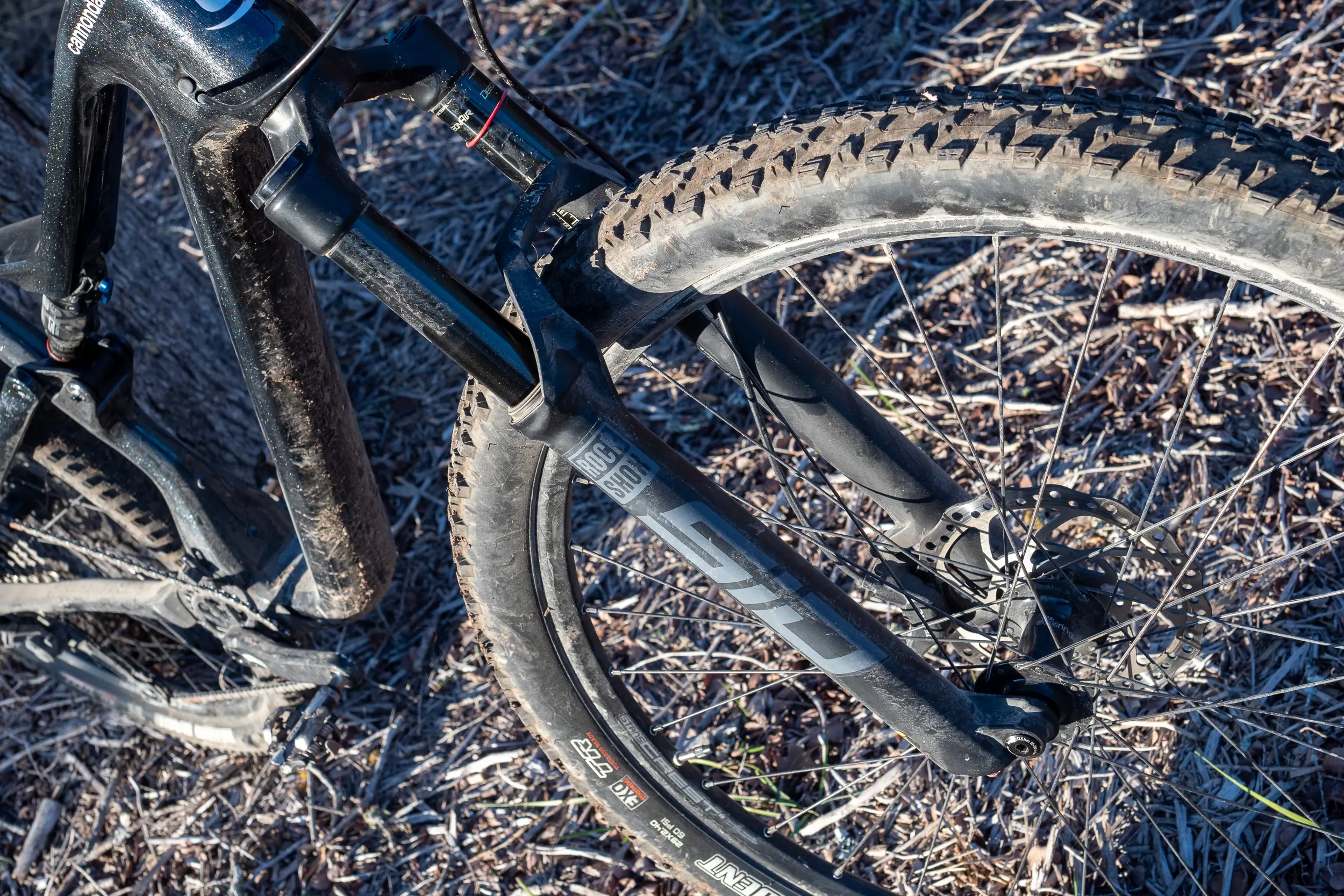



The RockShox SIDLuxe Select+ shock lacks compression adjustment outside of a lockout. When the trails were faster and hardpacked, I never missed compression adjusters. But when the going got rougher, and there were more sharp transitions between going up and down, I yearned for clickers.
Choosing a simpler shock and fork (and aluminum rims) most likely provided the financials to keep the Scalpel Carbon frame. So, the tradeoff seemed fair to me for the price point.
The RockShox SID Select midlevel fork with 35mm stanchions was impressive. The hold-up under cornering was excellent. It made finding the front tire’s limits much easier than with my smaller-diameter cross-country forks.
I also found the front axle twist much less prevalent than other forks in the category while navigating rock gardens. On fast, hardpacked sections, the fork responded splendidly to gentle undulations and smaller potholes, requiring little body English from me. I learned that I could keep applying the power to the pedals with little regard for these types of obstacles.
As trail obstacles got larger, the fun factor of the Cannondale Scalpel SE2 became more apparent. The 120mm of travel wasn’t enough to just bomb bigger, bike park-style challenges. But the active feel of the frame combined with the solid-feeling fork and Flex-Pivot kinematics encouraged me to pop over medium-size (think basketball to 2-foot ledges) features that I would approach with caution on a cross-country rig.
The bike also begged to be pumped over rollers and through bermed corners. For those who care less about Strava KOMs and more about joy-hucking, the Scalpel SE2 was a great tool.
On chunkier descents, the bike was still playful but not as planted as a trail bike with a longer wheelbase. This characteristic was obvious in fast straights with ledges and through wide, sweeping turns embedded with rocks.
I could go much faster than on my race bike, but both wheels didn’t feel super-settled. I had to be more deliberate than on a trail bike. But this added entertainment value to me when absolute speed wasn’t the priority.
Cornering
Descending the faster twisties aboard the Cannondale Scalpel SE2 was really enjoyable. The slightly forward weight bias made turning on the steerer axis almost automatic. The connection to the tires’ contact patches hit the sweet spot between control and comfort, and I was never hunting for the edge of tire adhesion; I could always feel it.
When the downhills became chunkier, I wished for more compression control to maintain the desired chassis attitude and resultant feel for traction, especially on the front tire. But the Scalpel SE2 reacted quickly and cornered on rails for faster, smoother downhill terrain.
The forward weight bias helped me even more at slower speeds, navigating tighter arcs. My personal cornering weak point is slow, tight radius turns. Single-digit speeds on 180-degree switchbacks befuddle me. But being able to turn around the steering head more than forcing the back end around suited my style. These types of turns are still challenging to me, but they were less so on the Cannondale Scalpel SE2.
Shifting
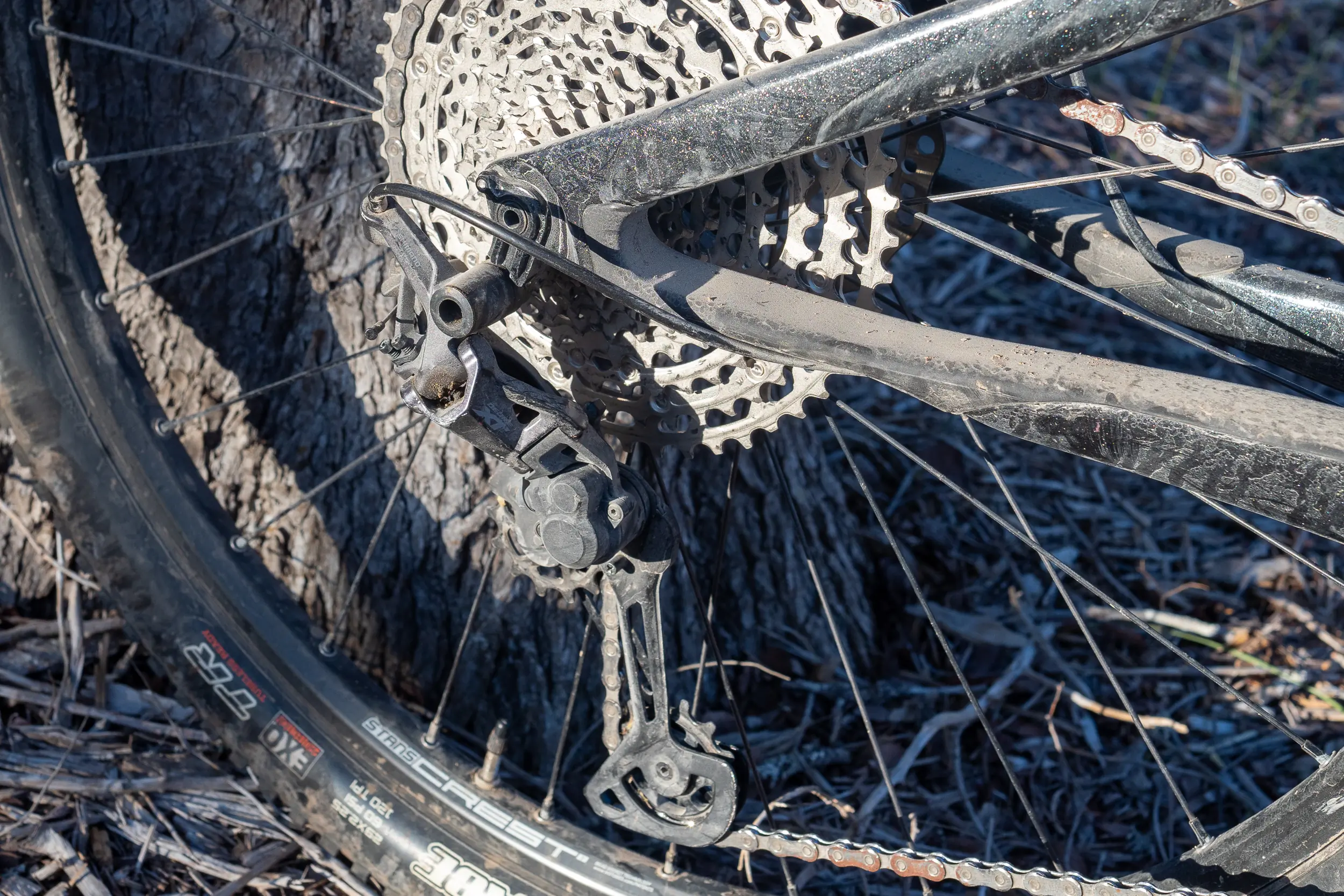



I’ve never had a complaint about Shimano Deore or Deore XT shifting. It was no different aboard the Cannondale Scalpel SE2. Every shift was executed quickly, even under climbing loads. There was zero ambiguity about whether the shift stuck or not. It always did, and I never felt hung up between cogs.
No, it’s not electronic, but I never wished it was. And I appreciated not worrying about charging or any problems from riding through water.
The clutch on the Deore XT rear derailleur did a remarkable job of managing the chain slack. I never once dropped a chain nor had any chain slap during the entire 9 months of testing. Cannondale’s uniquely mounted front chain guide also aided in chain management.
A Note on Braking
It’s no secret that bicycle industry supply chains were broken during the height of the COVID-19 pandemic. Almost every specification page for a bike in production then had a disclaimer stating components might be substituted. My test rig had such a substitution.
Cannondale specified Shimano’s MT501 hydraulic disc brakes on the Scalpel SE2. However, the test sample was shod with Tektro Gemini SL hydraulic binders.
I was not a fan of the Tektro units, as I found them underpowered, and they faded and lost progressiveness on longer descents. I’ve never had these issues with the Shimano MT501s, which I’ve tested frequently on other mountain bikes.
So, I am refraining from commenting further on this bike’s braking performance. I am 100% certain that with the correct Shimano system, the braking performance of my tester would improve dramatically.
Cannondale has offered to source the correct brakes. If the logistics work out and I have the bandwidth to retest the bike in 100% correct format, I will update this review.
Other Riding Impressions
Right away, I noticed how quiet the bike was. Cannondale needs to share its internal cabling and wiring methods with other brands. The Scalpel SE2 was easily the quietest internally routed mountain bike I have tested to date.
The choice of the aluminum Stan’s NoTubes Crest D rims definitely helped keep the MSRP to $4,050. Despite hammering them hard on rocky terrain, I had no issues with the rims, DT spokes, or Shimano hubs. I felt like this was a fair trade to keep the price down, and it opens the bike up to an obvious upgrade for those wanting swankier hoops.
The Maxxis Ardent Race (front) and Rekon Race (rear) tires never suffered a puncture and performed adequately. If I were to keep this bike, I would most likely replace the front tire with another Rekon Race to improve the cornering feel on hardpacked trails.
Conclusions on the Cannondale Scalpel SE2
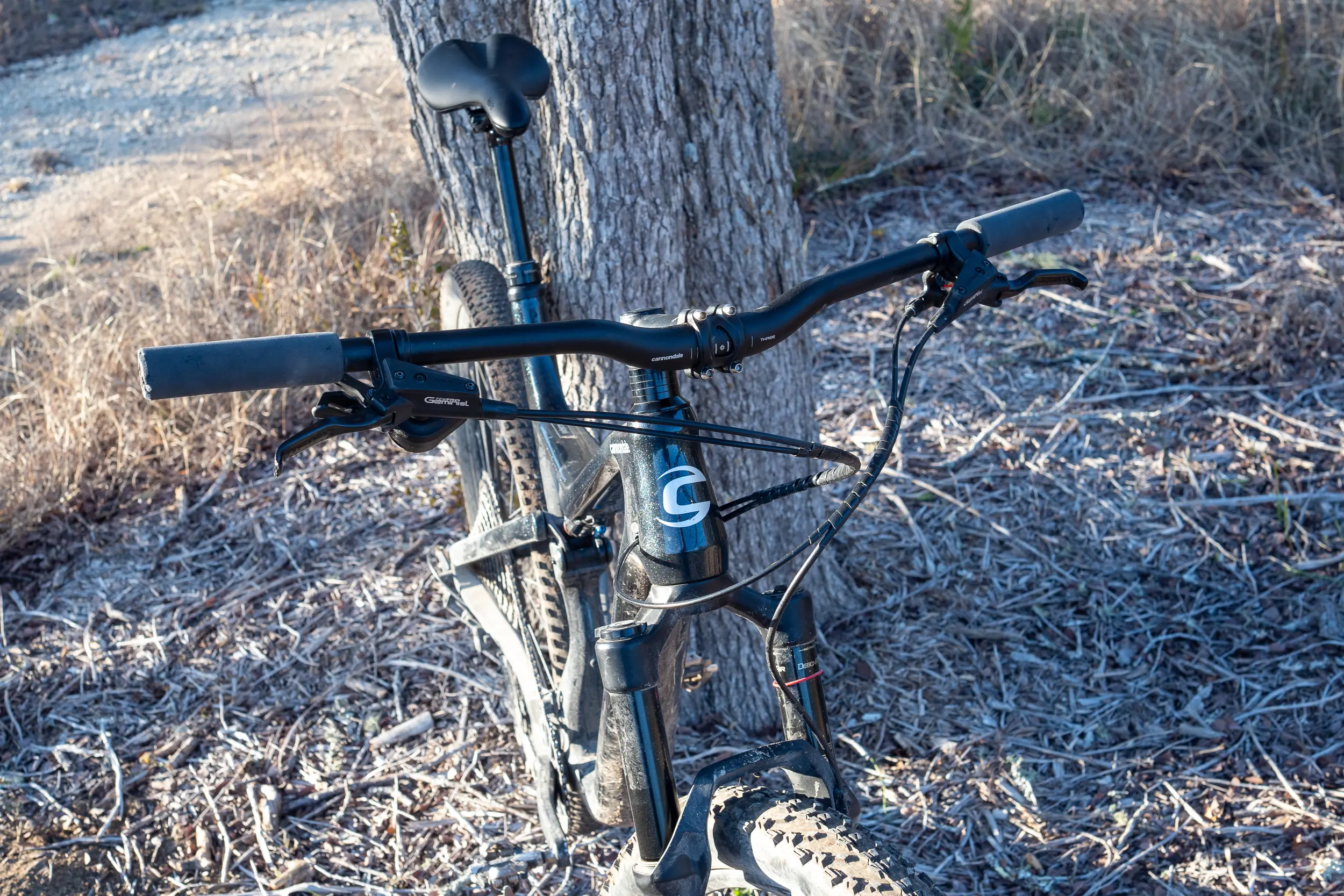



I walked away from the Cannondale Scalpel SE2 with one overarching thought: This is the bike for cross-country riding for those who are more concerned with the grin factor than their split times, power outputs, or heart rates. I could have much more fun on my usual cross-country testing loops, hopping and skipping over things I normally carve around on a CX rig.
On trail bike terrain, I had to be more deliberate; on trails I know well, I had to apply some strategy. This added to my fun factor on these outings compared to how I ride them on a 140mm+ bike. The Scalpel SE2 rewarded me when I cared less about my section time and more about having fun and improving my bike handling skills.
I can’t overstate how well the Flex-Pivot rear suspension worked. I’ve not had great experiences with flex-stay designs. This was an anomaly I gladly accepted — great performance with fewer pivots, links, and zero unwanted play.
The Cannondale Scalpel SE2 is also an excellent choice for those wanting to get into a category-crossing bike without breaking the bank and who want to upgrade their steed as they advance as riders. Every spec component worked adequately well, but each had an upgrade path that I felt would be enjoyable to pursue as skills improved.
Finally, the Black Magic frame finish was an utter show-stopper. Once, a UPS driver shouted at me to pull over just so he could take a closer look.
